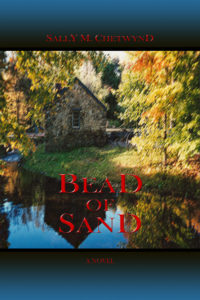You seek fresh, unusual programming for your historical society or town fair, so you won’t have to book that lecture on the neighbor’s tour of Italian cathedrals again.
You want live music for the reception at your museum’s grand opening of its latest exhibit, something that carries but is quiet enough so that guests can converse comfortably.
You’re hosting a Christmas tea, and need low-key background music in keeping with the season.
You’ve heard all about the armies’ battles during the American Civil War, but what do you know about the engineer corps that paved the way for those armies to move efficiently?
Consider these family-friendly options from Brass Castle Arts:
- A fife and drum corps with either an American Revolution or Civil War theme
- A Civil War-era civilian sketch artist for “local color” to stroll the crowds
- A hands-on demonstration of 19th Century engineering, from mapmaking to measuring distance with a Gunter’s chain to building a model signal tower.
PVT. SAM CHETWYND, 15th NY Engineers
While the rest of the army destroyed things, the engineers built things: pontoon bridges, fortifications, cheveux de frise, fraise, signal towers, maps and surveys, gabions, and abattis. A hands-on look at the tasks of the engineer during the American Civil War, this demonstration shows why the army could not operate without this tiny, unsung branch of service. Private Sam will teach you how to measure distance with a surveyor’s chain, build a model signal tower.
Solo performances include:
Fife and drum music, interspersed with the history of the instruments and the genealogy of period tunes;
Bowed psaltery music, appropriate background music for genteel events like ladies’ teas and weddings. The psaltery, an Old Testament stringed instrument that was the origin of the piano, is played with a bow, producing an ethereal sound that carries widely without overwhelming volume.
Bluegrass music with Carolyn Hutton of Drowned Valley
Civil War music with Shades of Gray Camp Band
American Revolution fifes and drums with
- The Musick of Prescott’s Battalion
- Bostonia Allarum Companie
SAMPLES
ENGINEERING
2013 See SCATV YouTube link
2010 Patriots Day at Jones Tavern of Iron Work Farm, Acton, MA – Civil War Engineer
2011 Patriots Day at Hosmer House, Acton, MA – Early American surveyor
2016 Gen. Lander Civil War Round Table, Lynn, MA – CW Engineer
1997-2016 Gildersleeve Elementary School, Portland, CT – CW Engineer
1997-2011 Peck Place School, Orange, CT – CW Engineer
2013-2016 Gen. Lander CWRT, Civil War Weekend, Lynn, MA – CW Engineer
MUSIC BOWED PSALTERY
2004 Christmas Open House, Brittany’s Hope Foundation, Elizabeth, PA
2000 Aul-Brennan Wedding, Durham, NC
2004-2011 Christmas Open House, Smith-Harris House, East Lyme, CT
MUSIC FIFE AND DRUM
2013 Lynn Veterans Appreciation Day Parade
2016 Fireball Run Benefit Parade, Amesbury, MA
2016-2018 Fourth of July concert, Bedford VA Hospital
MUSIC STRING BAND
2018 Winchendon History & Cultural Center, Winchendon, MA
Springfield Armory Museum NHS, Springfield, MA
Orchard Hill Assisted Living, Sudbury, MA
Highlands Retirement Community, Westborough, MA
Sudbury Senior Center, Sudbury, MA
Wellesley Veterans’ Appreciation Day, Wellesley, MA
2017 Chelsea VA Soldiers’ Home, Chelsea, MA
CDs
2018 “Songs That Will Linger” Shades of Gray Camp Band
CREDENTIALS
CIVIL WAR ENGINEER
See SCATV YouTube link
LIVING HISTORY
At the advent of the Bicentennial, I discovered that history didn’t have to be dusty and dry. Who knew? In a flash, I outfitted as a reenactor. I got to play dress-up, camp out in exotic locations (including an Air Force hangar), and wear out reproduction shoes and my lungs playing the fife as I marched in every parade on the East Coast.
It soon become far more than a hobby as I gleefully submerged into American history (my worst subject in school). In first-person portrayals, I learned about aspects of the lives of ordinary 18th and 19th century people enduring extraordinary times—music, culture, military, open-fire cooking, clothing styles, politics, literature, scientific discoveries and inventions, period vernacular and colloquialisms, social courtesies—all of which have endless parallels in our society today.
My occupational as a drafter expanded into a portrayal of military engineering—map-making, surveying and field measurements, bridging and pontoons, fortifications, and defensive structures such as fraise, cheveaux-de-frise, gabions, wire entanglements, saps, and bombproofs. In my solo performance as a Civil War military engineer, I represent a corporal in the Union army’s engineer corps, a little-known branch of the army that provided invaluable service, and engage audiences in hands-on activities, like measuring with a surveyor’s chain, converting links and rods into inches and feet, and building a model signal tower. Great fun!
MUSIC
Do two months of piano lessons in fifth grade count as formal musical training? (Don’t answer that!) I took up acoustic guitar when it was all the rage, playing it through college. Then folk music launched me into fifing and drumming. At the dawn of the Bicentennial, I was the only one in my reenactment group who could play a fife (one I had made from plastic plumbing pipe). McCobb’s Company of Militia boasted one other musician, a teenager who played the rope-tension snare drum. When another drummer joined us, we had the “Spirit of ’76” down pat.
Reenacting fueled my dive into research in order to portray the people of those times as accurately as was practical. This included tracing the origins of period tunes. That’s much easier these days than it was then, when we can now access the digital scan online of a hand-written music book from 1679 with its original ink blotches and wine stains (or is that blood?), housed in England, Scotland, or France.
Some tunes are evergreen. In 2009, the toy-piano plink in the background of a baby-food ad on TV caught my ear. What was that familiar tune? It was so far removed from my known context of it that I had to ponder for a minute before recognizing it. It was “Lilliburlero,” a mid-17th Century jig to which an Irish protest song was written in 1686. It’s been a popular piece ever since.
These days I satisfy my musical bent with two reenactment groups. I play fife with The Musick of Prescott’s Battalion, a small corps that represents the musicians among the citizen-soldier volunteers who responded to the Lexington alarm in April 1775. I sing and play gourd, spoons, and whistle with Shades of Gray, a Civil War-era camp band that reproduces the music heard around the campfires of both Northern and Southern armies in the 1860s. Check out our CDs elsewhere on this website. (enter link here)
I also play the bowed psaltery.



